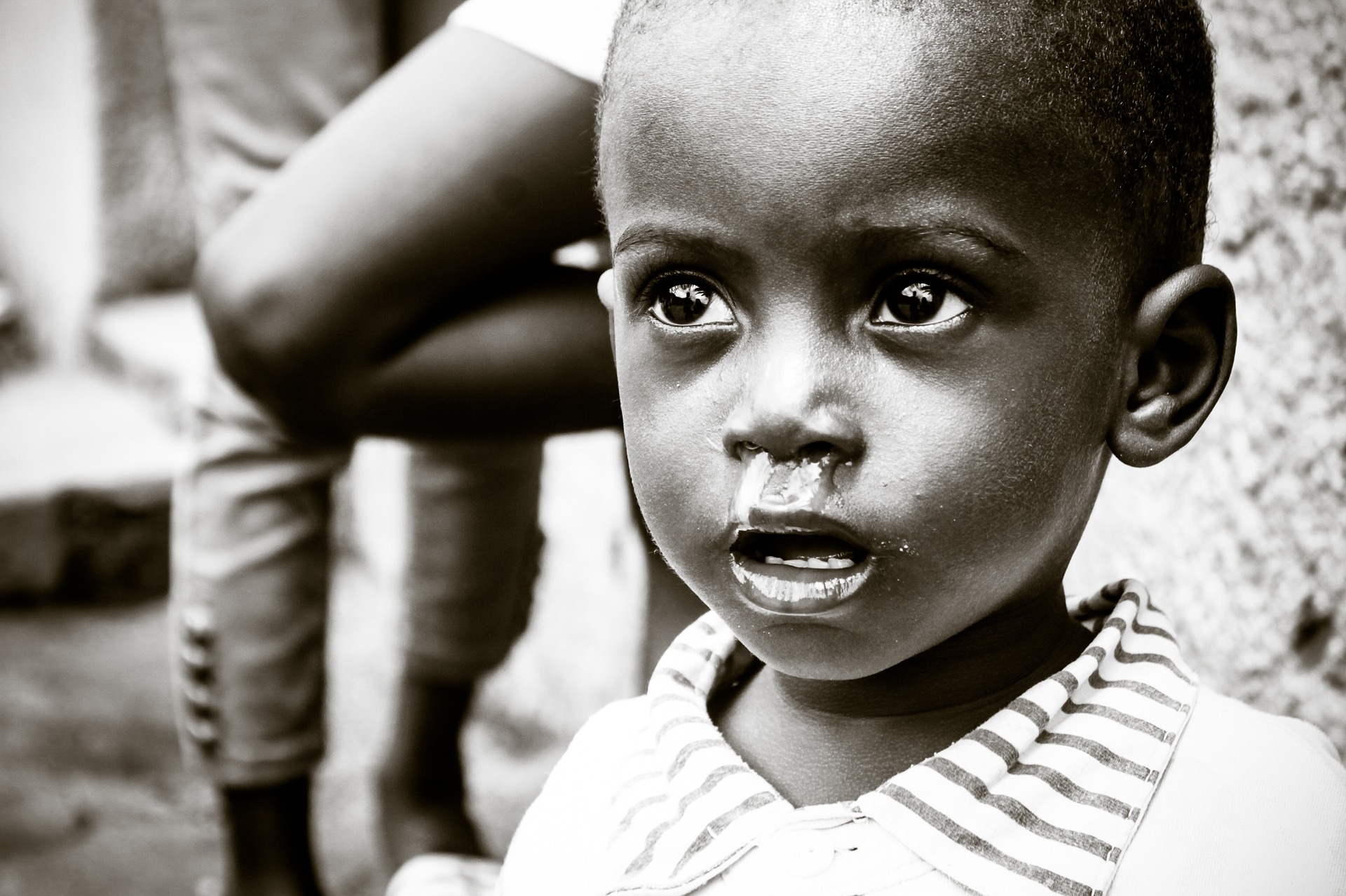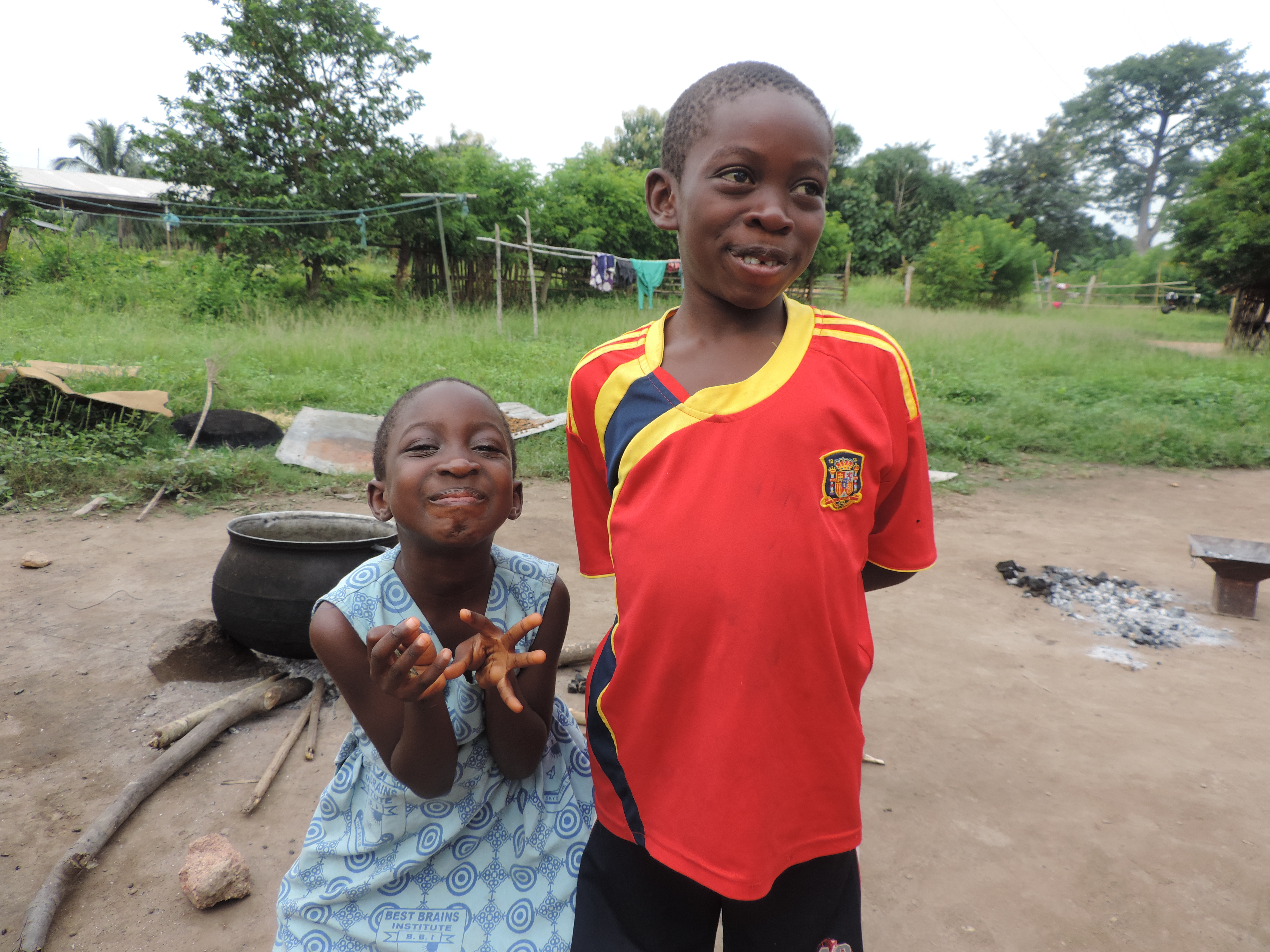Ebola – Wie HITA e.V auch ohne Impfstoff effektiv helfen kann
Vor ziemlich genau 4 Jahren (Anfang 2014) brach in Westafrika das Ebola-Virus aus. Es war die tödlichste Ebola-Epidemie seit Entdeckung des Virus im Jahre 1976: Über 28.000 Menschen infizierten sich mit dem Ebola-Virus und über 11.000 von ihnen starben. Die Dunkelziffer liegt vermutlich sehr viel höher; es ist davon auszugehen, dass viele Fälle überhaupt nicht erfasst worden sind. In den Medien war das Ebola-Virus auch hierzulande lange Zeit stark präsent, wie man es auch von anderen Krankheiten kennt wie zum Beispiel der Schweinegrippe, Vogelgrippe, EHEC oder auch als aktuelleres Beispiel das Zika-Virus. Unsere Angst vor Krankheiten und deren Folgen erklärt auch unsere Neugier ihnen gegenüber. Der Ebola-Virus war besonders beängstigend und auch in Deutschland hatten viele Menschen Angst vor der Krankheit, die in Afrika wütete. Der Grund: Es gab weder einen Impfstoff noch geeignete Arzneimittel, um das Virus angemessen therapieren zu können. Der Ebola-Virus verbreitete sich aber natürlich nicht in Europa und infizierte fast ausschließlich Menschen aus westafrikanischen Staaten (v.a. Liberia, Sierra Leone und der Senegal). In diesen Staaten herrscht Armut und es gibt keine ausreichende medizinische Infrastruktur. Dies sind selbstverständlich begünstigende Faktoren für eine Epidemie und verschärfen sie sogar.
Anfang 2016 wurde die Epidemie für beendet erklärt und die betroffenen westafrikanischen Staaten gelten seit diesem Zeitpunkt wieder als Ebola-frei. Ende desselben Jahres wurde verkündet, einen möglicherweise tauglichen Impfstoff gefunden zu haben. Dieser wird allerdings höchstwahrscheinlich nur bei einem bestimmten Erregerstamm des Ebola-Virus helfen können. Dennoch wird mit diesem Impfstoff, der vielleicht noch in diesem Jahr (2018) die Marktzulassung erhält und damit in Produktion gehen kann, der Menschheit eine Waffe gegen die tödliche Krankheit gegeben und in Zukunft wird man dadurch hoffentlich viele Menschen vor dem Ebola-Virus bewahren können.
Für die über 10.000 Ebola-Toten kommt diese Mittel jedoch vier Jahre zu spät. Dies offenbart ein grundsätzliches Problem bei Virus-Epidemien: Es gibt oftmals keine direkte Therapiemöglichkeit für die Viruserkrankung; die Schutzimpfungen (passiv und aktiv) kommen meistens zu spät und stehen nicht zur Verfügung, wenn sie dringend gebraucht werden. Warum ist das so? Wie kann man das ändern? Dazu bedarf es einen kleinen Exkurs in die medizinischen Zusammenhänge:
Infektionskrankheiten, also ansteckende Krankheiten, können entweder durch Bakterien, Viren oder Pilze verursacht werden. Pilzerkrankungen werden in diesem Kontext allerdings außen vor gelassen. Bakterien sind kleine Organismen, die alle notwendigen Bedingungen für die Definition eines biologischen Lebewesens erfüllen: sie haben einen eigenen Stoffwechsel und können sich fortpflanzen, um nur zwei Merkmale zu nennen. Kommt es bei uns Menschen nun zu einer bakteriellen Infektion, also dem Eintritt von Bakterien in unseren Körper und kann unser Immunsystem die schädlichen Bakterien (Bakterien sind nicht per se schädlich) nicht von alleine bekämpfen, können diese Infektionen tödlich sein. In so einem Fall haben wir glücklicherweise spätestens seit 1941 Medikamente, die gegen diese biotischen (altgr. bios „Leben“) Vorgänge wirken können: die Antibiotika. Gegen Bakterien, also kleine lebendige Mikroorganismen, helfen Antibiotika, indem sie die Fortpflanzung oder den Stoffwechsel der Bakterien angreifen. Es gibt zwar verschiedene Antibiotika-Gruppen für die verschiedenen bakteriellen Erkrankungen und nicht jedes Antibiotikum ist für jeden bakteriellen Infekt geeignet, aber selbst, wenn das Bakterium noch nicht genau diagnostiziert wurde, kann man mit Breitbandantibiotika effektiv gegen den Infekt vorgehen. Wir verdanken Antibiotika eine deutlich erhöhte Lebenserwartung und eine verbesserte Lebensqualität im Vergleich zu den Menschen aus einer Zeit, in der es noch keine Antibiotika gab und eine infizierte Wunde zum Tod führen konnte.
Soweit trifft das auf Bakterien bzw. bakterielle Infektionen zu. Viren hingegen sind im Vergleich zu Bakterien viel kleiner und zählen nicht zu den Lebewesen, da sie die erforderlichen Merkmale des biologischen Lebens nicht erfüllen: sie haben weder eine eigene Fortpflanzung noch einen eigenen Stoffwechsel (tatsächlich ist es innerhalb der Biologie umstritten, ob Viren nicht doch zu den Lebewesen gezählt werden können, da sie über Erbinformation verfügen). Antibiotika, die nur gegen biotische/lebedinge Erreger wirken können, helfen somit nicht bei viralen Erkrankungen.
Obwohl Viren keine eigene Fortpflanzung haben, vermehren sie sich. Dies funktioniert indem sie eine Wirtszelle (zum Beispiel eine menschliche) befallen und sich über diese fortpflanzen. Leidet ein Mensch an einer viralen Erkrankung und wird versucht den Virus an seiner Fortpflanzung zu hindern, müsste man die körpereigenen Zellen angreifen. Es gibt zwar Virostatika (also Medikamente gegen Viren), diese sind aber meist erregerspezifisch -Breitbandvirustatika gibt es nicht. Sofern ein Impfstoff vorliegt, kann man Menschen gegen Viruserkrankungen helfen, auch dann, wenn der Mensch beriets infiziert ist. Gibt es aber kein Mittel gegen einen spezifischen Virus, kann man nur die Symptome behandeln und dem körpereigenen Immunsystem so die Möglichkeit geben, den Virus selbst zu bekämpfen. Auf diese Weise wird aktuell auch das Ebola-Virus therapiert. Virale Erkrankungen haben für den Menschen den Vorteil, dass Viren, die einmal von unserem Immunsystem erfolgreich bekämpft wurden, in Zukunft sehr viel schneller und effektiver bekämpft werden, das unser Immunsystem eine Art Gedächtnis für Viren hat. Das ist der Grund, warum wir im Erwachsenenalter viele Kinderkrankheiten kein zweites Mal bekommen.
Für die Impfstoffentwicklung heißt das aber, dass für jeden Virus ein eigener Impfstoff entwickelt werden muss. Ein erregerspezifisches Virustatikum muss also immer erst neu erforscht werden. Selbst wenn ein möglicher Impfstoff gefunden worden ist, müssen verschiedene Tests an Tieren und dann auch an Menschen durchgeführt werden, bevor er eine Marktzulassung erhält und produziert werden kann. Auch wenn massiv Forschungsgelder ausgeschüttet werden und alle Forscher der Welt an einem Impfstoff arbeiten, wird es immer mehrere Jahre dauern, bis dieser auch tatsächlich erhältlich ist. Natürlich können Viren auch mutieren und damit Schutzimpfungen unterlaufen.
Wird also kurzfristig ein Impfstoff für einen Virus benötigt, ist dieser in vielen Fällen schlicht nicht erhältlich. Für das Ebola-Virus wird nun vielleicht vier Jahre nach der Ebola-Epidemie ein Impfstoff vorhanden sein. Aber was ist mit dem Zika-Virus oder anderen Viren, die in Zukunft zu einer Epidemie führen könnten?! Das Problem, Impfstoffe häufig nur zeitlich verzögert zu haben, wird die Menschheit wohl auch noch die nächsten Jahrzehnte begleiten. Was ist also zu tun? Wie kann man dennoch effektiv helfen? Wie kann HITA e.V effektiv helfen?
Eine Infektionskrankheit lässt sich am besten bekämpfen, wenn sie an der Ausbreitung gehindert wird. Wenn kein Impfstoff vorhanden ist, bleibt das Mittel der Prävention. Ein Impfstoff für das Ebola-Virus ist zwar nicht bekannt, sehr wohl aber die Übertragungswege und damit auch, wie man eine Übertragung des Virus verhindern kann. In diesem Kontext sollte festgehalten werden: Das Ebola-Virus nicht über die Luft übertragen wird. Die Schutzanzüge und die Sonderisolierstationen in den Krankenhäuser sind viel mehr eine Vorsichtsmaßnahme, da über die Luft Körperflüssigkeiten eines Ebola-Infizierten übertragen werden könnten. Normalerweise gilt aber, dass nur durch direkten Kontakt mit einem Infizierten, vor allem mit Körperflüssigkeiten, eine Übertragung erfolgen kann. Für einen kurzen Zeitraum ist eine Übertragung auch durch Gegenstände möglich (zum Beispiel die Kleidung eines Infizierten), sofern diese in Kontakt mit infizierter Körperflüssigkeit gekommen ist. Solange man keine offenen Wunden an den Händen hat (auch keine kleinen Hautrisse) kann man den Virus sogar durch Händewaschen von der Hand entfernen. Einfachste Hygienemaßnahmen können ausreichen, um sich vor dem Virus effektiv zu schützen.
Das Problem liegt eigentlich an einer anderen Stelle: Dieses Wissen über Infektionskrankheiten und der Übertragung des Ebola-Virus ist den Betroffenen in den meisten Fällen nicht bekannt. Wie eingangs bereits geschrieben, sind vor allem arme Menschen von der Erkrankung betroffen. Hinzu kommt die Kultur der Menschen in Westafrika: Gegessen wird vor allem mit den Fingern, oftmals auch ohne sich vorher die Hände zu waschen. Dies geschieht aus Unwissenheit über Hygiene und Infektionskrankheiten heraus. Außerdem werden tote Angehörige von den Familien gewaschen, sodass auch auf diese Weise häufig Übertragungen stattgefunden haben, wenn der Tote mit dem Ebola-Virus infiziert war. Die Regierungen der betroffenen Staaten haben natürlich darauf reagiert und mit Plakaten überall im Land versucht die Bevölkerung zu informieren und zu Hygienemaßnahmen aufzufordern. Doch auch diese Plakate haben vielen Menschen nicht mehr helfen können.
Es stellt sich also die Frage, wie man auf schnellstem Wege die Masse der Menschen erreichen kann. Es gibt in Liberia ein flächendeckendes Mobilfunknetz. Dies ist zwar sehr störungsanfällig, aber es funktioniert und in Liberia kamen im Jahr 2014 etwa 733,5 Mobilfunkverträge auf 1000 Einwohner (Zahlen von weltalmanach.de entnommen). Es ist schwer zu glauben, aber die Hauptstadt Liberias hat keine funktionierende Abfallentsorgung, Mobilfunknetz gibt es aber auch in den ländlichsten Regionen Liberias. Mit den anderen Staaten, die vom Ebola-Virus betroffen waren, sieht es genauso aus. Wir von HITA e.V haben dieses Potenzial schon früh erkannt und versuchen seitdem diese vorhandenen IT-Strukturen in Afrika für eine Verbesserung der Gesundheitsversorgung zu nutzen. Wenn jeder Handybesitzer in Liberia über sein Handy Informationen über das Ebola-Virus erhalten könnte und diese Informationen/Anweisungen umsetzen würde, wäre der Prävention Genüge getan. Das können einfache Textnachrichten sein, aber auch Videos oder Animationen, in denen komplexe Zusammenhänge erklärt werden. Bis hin zur Telemedizin ist alles möglich. Über das Mobilfunknetz kann man zudem auch kurzfristig reagieren.
Wir suchen mit einfachsten Mitteln – indem wir nämlich bereits vorhandene Strukturen nutzen – das Gesundheitssystem in Afrika effektiv zu verbessern. Indem wir auf moderne zukunftsfähige Technologien setzen, sind wir in der Lage auf zukünftige Probleme zu reagieren und sie zu lösen. Haben Sie Fragen zur Arbeit von HITA e.V oder wollen Sie wissen, wie Sie uns unterstützen können? Dann kontaktieren Sie uns. Schreiben sie uns zum Beispiel eine Email an info@hita-ev.org.
Folgen Sie Maxi auch auf unseren sozialen Medienkanälen, schauen Sie sich seine Fotos bei Instagram an.




